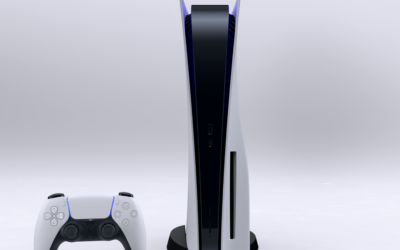Our Blog
Ut porttitor imperdiet hendrerit. Suspendisse pulvinar lacus nec sollicitudin finibus ligula quam.
Facebook responsible for 94% of child sex abuse images reported by US tech firms
Facebook was responsible for 94% of the 69 million child sex abuse images reported by US technology companies last year.
The figures emerged as seven countries, including the UK, published a statement on Sunday warning of the impact of end-to-end encryption on public safety online.
Facebook has previously announced plans to fully encrypt communications in its Messenger app, as well as its Instagram Direct service – on top of WhatsApp, which is already encrypted – meaning no one apart from the sender and recipient can read or modify messages.
The social media site said the changes are designed to improve user privacy on all of its platforms.
But law enforcement agencies fear the move will have a devastating impact on their ability to target paedophiles and protect children online.
Advertisement
Some 16.9 million referrals were made by US tech firms to the National Centre for Missing and Exploited Children (NCMEC) last year, including 69 million images of children being abused – up 50% on the previous year.
Some 94% of the reports, which include the worst category of images, came from Facebook, Home Office officials said.
More from Facebook
But the National Crime Agency (NCA) has warned the number could drop to zero if Facebook presses ahead with end-to-end encryption.
Facebook privacy rules could help abusers, Zuckerberg warned
Robert Jones, the NCA director responsible for tackling child sexual abuse, said of the plan: “The lights go out, the door gets slammed, and we lose all of that insight. It is as simple as that.
“And nothing, you know we’re relying on the best technical expertise… in the UK, the same people that keep the UK safe against terrorists, hostile states, cyber attacks, are telling us there is no viable alternative. I believe them. And I am deeply concerned.”
The NCA believes there are at least 300,000 people in the UK who pose a sexual threat to children, with 86,832 UK-related referrals to NCMEC last year, including 52% from Facebook and 11% from Instagram.
Mr Jones said industry reporting led to the arrest of more than 4,500 offenders and the safeguarding of around 6,000 children in the UK in the year to June 2020.
Image: Facebook also owns Instagram and WhatsApp
He continued: “The end-to-end encryption model that’s being proposed takes out of the game one of the most successful ways for us to identify leads, and that layers on more complexity to our investigations, our digital media, our digital forensics, our profiling of individuals and our live intelligence leads, which allow us to identify victims and safeguard them.
“What we risk losing with these changes is the content, which gives us the intelligence leads to pursue those offenders and rescue those children.”
Home Office officials say Facebook has not published credible plans to protect child safety a year on from Home Secretary Priti Patel’s open letter to the firm’s co-founder Mark Zuckerberg asking it to halt its end-to-end encryption proposals.
Image: Priti Patel has said Facebook has not done enough to protect public safety
A statement signed by Ms Patel, along with the US, Australia, New Zealand, Canada, India and Japan – whose populations represent around a fifth of Facebook’s two billion global users – is calling for tech companies to ensure they don’t blind themselves to criminality on their platforms.
Ms Patel said: “We owe it to all of our citizens, especially our children, to ensure their safety by continuing to unmask sexual predators and terrorists operating online.”
The statement calls for public safety to be embedded in systems, for law enforcement to be given access to content, and for engagement with governments.
It reads: “Encryption is an existential anchor of trust in the digital world and we do not support counter-productive and dangerous approaches that would materially weaken or limit security systems
“Particular implementations of encryption technology, however, pose significant challenges to public safety, including to highly vulnerable members of our societies like sexually exploited children.”
Please use Chrome browser for a more accessible video player
From 2019: Teens exposed to highly charged political ads on Facebook and Instagram
A Facebook spokesman said: “We’ve long argued that end-to-end encryption is necessary to protect people’s most private information.
“In all of these countries, people prefer end-to-end encrypted messaging on various apps because it keeps their messages safe from hackers, criminals, and foreign interference.
“Facebook has led the industry in developing new ways to prevent, detect, and respond to abuse while maintaining high security, and we will continue to do so.”
Meghan opens up on 'almost unsurvivable' online abuse
The Duchess of Sussex has spoken about the “almost unsurvivable” online abuse she experienced in a podcast to mark World Mental Health Day.
Appearing alongside her husband Prince Harry on the popular Teenage Therapy podcast, Meghan said she was told that “in 2019, I was the most trolled person in the entire world – male or female”.
“[For] eight months of that, I wasn’t even visible, I was on maternity leave with the baby – but what was able to be manufactured and churned out, it’s almost unsurvivable, it’s so big you can’t even think what that feels like,” she said.
Introducing themselves as Harry and Meghan, the pair talked about their experiences of loss and grief, with Harry stating that “every single one of us” should be talking about our mental health.
Meghan said her mental health suffered due to the trolling she was targeted with.
Advertisement
“I don’t care if you’re 15 or 25, if people are saying things about you that aren’t true, what that does to your mental and emotional health is so damaging,” she said.
Please use Chrome browser for a more accessible video player
Meghan on ‘toxicity’ of clickbait
This was especially an issue for many during the coronavirus lockdown, she said, when “if you’re not in school then you are finding yourself on your devices or online more”.
More from Meghan Markle
“Yes, it’s a great way to connect but it also ends up being a place where there is a lot of disconnected,” she added.
“We all know what it feels like to have our feelings hurt, we all know what it feels like to be isolated, and I think that’s why the work you guys are doing here is so important,” she said.
Harry said it is “very easy to be sucked in and consumed by negativity”, but everyone has “the choice to be able to cut that out of our lives”.
He said: “Hate following has become a thing, you don’t need to do that. Just as much as we worry about, be concerned, and take notice of what we put in our bellies as a diet, the same applies for our eyes and our mind, what we’re consuming is affecting us.
“For me, I made the choice not to read it, not to see it, and to remove myself from that, and to very much focus on the uplifting and the hopeful side.”
The podcast follows the couple speaking to the London Evening Standard to mark the start of Black History Month, with both sharing their hopes for equality
Harry, 36, explained how he had become more aware of issues surrounding race after his marriage to Meghan, 39.
Scientists discover 'fastest possible speed of sound'
Scientists say they have discovered the fastest possible speed of sound.
Researchers found soundwaves travelled at 36km per second in solid atomic hydrogen.
That is about twice the speed at which they can travel through diamond – the hardest known material in the world.
Image: You can hear a train through the tracks more quickly than through the air
Until now, it was not known whether there was an upper speed limit, either through solids or liquids.
Soundwaves go at different speeds, depending on what they are travelling through.
Advertisement
They pass through solids more quickly than through liquids or gas – which is why a train can be heard sooner through the tracks than through the air.
Scientists tested a wide range of materials, and found the speed of sound in solid atomic hydrogen is close to the theoretical fundamental limit.
More from UK
The research, published in the journal Science Advances, came from a collaboration between Queen Mary University of London, the University of Cambridge and the Institute for High Pressure Physics in Moscow, Russia.
The study of soundwaves has important scientific applications.
Professor Chris Pickard, Professor of Materials Science at the University of Cambridge, said: “Seismologists use soundwaves initiated by earthquakes deep in the Earth interior to understand the nature of seismic events and the properties of Earth composition.
“They’re also of interest to materials scientists because soundwaves are related to important elastic properties including the ability to resist stress.”
Professor Kostya Trachenko, Professor of Physics at Queen Mary University of London, said: “We believe the findings of this study could have further scientific applications by helping us to find and understand limits of different properties such as viscosity and thermal conductivity relevant for high-temperature superconductivity, quark-gluon plasma and even black hole physics.”
Asteroid is like a cream-filled chocolate egg flying through space, Nasa spacecraft shows as it prepares to bring samples back to Earth
The inside of Asteroid Bennu could be less dense than its outer layers – like a chocolate egg filled with cream, Nasa’s OSIRIS-Rex spacecraft has shown.Bennu is a dark “rubble pile” asteroid, held together by gravity. It is thought to have been formed from the collision of a much larger object, and its cratered and chunky surface suggest that it has continued to have an eventful time as it has made its way through the solar system.Nasa’s spacecraft and its engineers are preparing for a daring “touch-and-go” mission in which it will briefly touch down on the asteroid and gather samples, before jumping back off and returning to Earth.As that time approaches, new research has been published that looks at the composition of the asteroid itself, including the colour of its surface and what the conditions might be like underneath.The findings not only help show more about the asteroid itself but could also reveal how such asteroids in the Solar System evolve, and transform over the millions of years their lifetime can last.Watch moreOSIRIS-REx has already revealed unprecedented data on the asteroid, which orbits more than 200 million miles from Earth, since it arrived in late 2018. Bennu is now easily the most studied asteroid in the history of space exploration, giving an insight into the many similar objects that fly around our solar system.But researchers have still been mostly puzzled by the conditions beneath Bennu’s surface. Researchers have studied the outside in detail – but not the inside.Now researchers from the University of Colorado Boulder’s OSIRIS-REx team have published research in the journal Science Advances which aims to give a peek into the inside of the object. They used a range of instruments on board Nasa’s spacecraft to measure how its gravity field changes, and to use that as something like an X-ray machine to look inside.”If you can measure the gravity field with enough precision, that places hard constraints on where the mass is located, even if you can’t see it directly,” said Andrew French, a coauthor of the new study and a former graduate student at CU Boulder, now at NASA’s Jet Propulsion Laboratory (JPL).The research found not only that the core of the asteroid is weaker than its surface – but that its composition could lead to its destruction relatively soon.”You could imagine maybe in a million years or less the whole thing flying apart,” said Daniel Scheeres, one of the professors who led the study.Other research published at the same time found that the materials that make up Bennu are distributed across its surface, meaning that any sample should be relatively representative.”Our recent studies show that organics and minerals associated with the presence of water are scattered broadly around Bennu’s surface, so any sample returned to Earth should contain these compounds and minerals,” said SwRI’s Dr. Vicky Hamilton, a coauthor on three papers published in Science.”We will compare the sample’s relative abundances of organics, carbonates, silicates and other minerals to those in meteorites to help determine the scenarios that best explain Bennu’s surface composition.”Researchers will also be able to compare the materials taken from Bennu with those from Ryugu, another near-Earth asteroid, which was examined by a Japanese spacecraft that will land on Earth with samples of the asteroid in December.
PS5 may 'exhibit errors or unexpected behaviour' when playing PlayStation 4 games, Sony warns
Sony has said that some older games could “exhibit errors or unexpected behavior” when played on the new PlayStation 5.The company has released a new FAQ detailing how backwards compatibility will work on the new console. Though it has been less focused on allowing older games to work than Microsoft, the company has committed to ensuring that backward compatibility is in place for many titles.Sony said the PS5 will be backward compatible with the “overwhelming majority of PS4 games”. Given there are more than 4,000 PS4 games available, that amounts to “thousands” of games that will be backwards compatible, but Sony did not indicate exactly how many will run on the new console.It did warn that with some of those games, “some functionalities that were available on the PS4 console may not be available on PS5 consoles”. What’s more, some of those games could “exhibit errors or unexpected behavior when played on PS5 consoles”, it warned.However, it also said that some of those PS4 games will actually run better on the PS5 than the PlayStation 4. Some games will be able to take advantage of a “Game Boost” tool that will allow the games to harness the extra power of the PS5 to run with a higher or smoother frame rate, Sony said.Watch moreIt did not say how many of the games could run into problems, or how many of them would be compatible with the Game Boost feature.Sony also warned players that they should make sure to load up their PS4 game on their new PS5, so they can check whether the play experience is satisfactory, before buying any add-ons or upgrades for any particular game.The company also warned that a host of games – DWVR, Afro Samurai 2 Revenge of Kuma Volume One, TT Isle of Man – Ride on the Edge 2, Just Deal With It!, Shadow Complex Remastered, Robinson: The Journey, We Sing, Hitman Go: Definitive Edition, Shadwen and Joe’s Diner – will not be able to work at all on the PlayStation 5.PS4 controllers should still work as expected when playing games on the PS5, Sony said, and the same should be true of other accessories such as racing wheels or the PS VR headset.Some games will offer the option to upgrade PS4 games to the PS5 version, it also noted. That will be done either by putting the PS4 disc into the PS5, or navigating to the game’s entry on the store – there should then be the option to upgrade, which might require paying an extra fee.
Twitter testing how misinformation labels can be more obvious in run up to US election
Twitter is rethinking how the labels it applies to misinformation look and work, its head of site integrity told Reuters in an interview, as the social media company tries to make these interventions more obvious and cut its reaction times.Twitter’s Yoel Roth said the company is exploring changes to the small blue notices that it attaches to certain false or misleading tweets, to make these signals more ‘overt’ and be more ‘direct’ in giving users information. But he did not say whether any new versions would be ready before the US election in the next four weeks, a period that experts say could be rife with false and misleading online content.Mr Roth said the new efforts at Twitter include testing a more visible reddish-magenta colour, and working out whether to flag users who consistently post false information.“We’ve definitely heard the feedback that it would be useful to see if an account is a repeat offender or has been repeatedly labelled, and we’re thinking about the options there,” said Mr Roth.Twitter started labelling manipulated or fabricated media in early 2020, after a public feedback period. It expanded its labels to coronavirus misinformation and then to misleading tweets about elections and civic processes. Twitter says it has now labelled thousands of posts, though most attention has been on the labels applied to tweets by Donald Trump.Watch moreIn September, Twitter announced it would label or remove posts claiming election victory before results were certified.Mr Roth said research undermining the idea that corrections can strengthen people’s beliefs in misinformation – known as the “backfire effect” – had contributed to Twitter rethinking how its labels could be more obvious. The risk is that label “becomes a badge of honour” that users actively pursue for attention, said Mr Roth.Though Twitter’s labels have been praised by some misinformation experts as a long-overdue intervention, their execution has triggered criticisms from researchers as too slow.“Mostly things take off so fast that if you wait 20 or 30 minutes … most of the spread for someone with a big audience has already happened,” said Kate Starbird, an associate professor at the University of Washington who has been analysing Twitter’s labelling responses.It took Twitter about eight hours to add labels to Mr Trump’s tweets about mail-in voting the first time it labelled him in May, though Ms Starbird said Twitter was getting quicker. Two Trump tweets in September appeared to have been labelled within two hours.Mr Roth said Twitter reduces the reach of all tweets labelled for misinformation, by limiting their visibility and not recommending them in places like search results. The company declined to share any data about the effectiveness of these steps.In August, Election Integrity Partnership researchers said Twitter’s disabling retweets on a Trump tweet that violated its rules had a clear effect on its spread but was “too little, too late”.Mr Roth said Twitter takes into account the number of retweets, engagement and views to prioritise viral content for review to give “the most bang for our buck”. But he said Twitter was exploring how to predict which tweets would go viral and conducting exercises on likely new 2020 election claims to get faster.Multiple researchers told Reuters it was difficult to assess effectiveness of Twitter’s interventions without knowing which actions it was taking and when.The company does not keep public lists of when it has applied labels and has not shared data to allow outsiders to assess how its labels affect a tweet’s spread or how users interact with them.“The platforms need to explain what hypothesis they’re testing, how they’re testing it, what the results are and be transparent,” said Tommy Shane, head of policy and impact at anti-misinformation non-profit First Draft. “Because these are public experiments.”Twitter has labelled or put grey warning overlays over 10 @realDonaldTrump tweets for reasons related to civic integrity rules since it first labelled him in May.Mr Roth said Twitter consults with partners, including election officials, on its labelling. But it has chosen to link to a page of tweets from multiple sources rather than follow Facebook’s lead of paying third-party fact-checkers – including Reuters – to assess content as they could be “easy to dismiss if you disagree with them”.Read moreFacebook Inc, which exempts politicians from its fact-checking programme and faced backlash for not acting on misleading Trump posts, has started adding labels with voting information to all related posts. This strategy has been criticised by researchers for not quickly and obviously differentiating between true and false.Mr Trump’s spokeswoman Samantha Zager said in a statement, without offering specific evidence, that “across social media platforms, it’s clear the Silicon Valley Mafia creates arbitrary rules that do not apply equally to every account and instead are used to silence any views in opposition to those held by the liberal Big Tech coastal elites”:Asked how Twitter is monitoring high-profile users like Mr Trump or his Democratic presidential rival Joe Biden, Mr Roth said Twitter does not “specifically focus in on individual accounts or individual account holders”.
30,000+
Avid Subscribers






